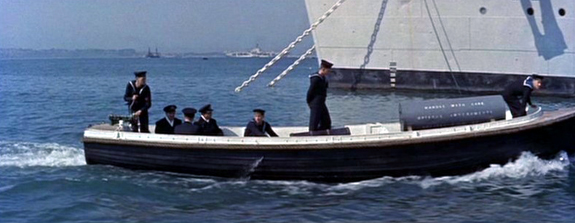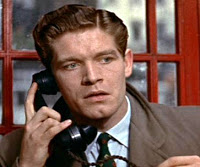Beats (2019) directed by Brian Welsh
In 1994, John Major’s Tory government introduced the Criminal Justice and Public Order Act 1994, a bill which banned gatherings of 20 or more people where music “wholly or predominantly characterised by the emission of a succession of repetitive beats” was being played. The bill was a response to the UK’s massive free party scene, which were weekly dance music raves held in the countryside and abandoned buildings in the outskirts of the cities in the UK attended by thousands, and importantly for free of charge. In many ways these parties were a protest against the Uk’s era of Thatcherism, conservatism, and austerity. Naturally, these raves, with their loud noises and prevalent drug use, met the ire of the law and were actively suppressed by the police and UK authorities. By 1994, the days were numbered for this music scene and thousands of ravers prepared for one last hurrah in defiance of the legislation.
Spanner (Lorn Macdonald) and Johnno (Cristian Ortega) two dance music loving teens in Scotland couldn’t be more different. Spanner is a troubled youth, his brother is the leader of a local gang, he acts wildly and outgoing and his hated by Johnno’s mother and step-father who is a local cop. Johnno, on the other, hand is a bit more reserved and quiet and a bit awkward around people other than Johnno. Nonetheless they are best friends, however Johnno is moving away in a couple of weeks. However, they hear about the free party to end all free parties being held locally in protest of the Criminal Justice and Public Order Act and see it as a chance to attend their first and last rave together before going their separate ways in life.
Beats is an excellent coming of age film with is in my opinion the most accurate depiction of a rave I have seen in film. Well, though I’m far to young and live in the wrong continent to have experienced the UK’s free party scene in the 1990s, I am fairly well acquainted with the house and techno scene today. Most often when movies and TV shows have club or rave scenes it’s embarrassing with how wrong they get the scene. They get the energy of raves all wrong, the dancers are barely dancing, and then you have stock images of crowds with some strobe lights flashing. Beats however, gets the whole rave experience right. The whole experience is immediately recognizable, from the anticipation of entering the warehouse with your friends, getting immediately separated from them, rejoining with them in bliss, the dancing, consuming and peaking mid rave on uhhh “party enhancing substances”, and the sweaty and pulsating vibes of the party. The most accurate depiction of the experience I have seen.
Considering its subject matter, and how integral colours and lights are to the rave scene, I thought it was a curious choice for Welsh to shoot the film in black and white and for most of the film I thought it was a regrettable idea. However, considering its other subject matter, which is the nostalgia for and recognition that the good old days are ending, by the end of the film it grew on me and I think it is suitable for the film. The film ends a little too tidily, but the friendship between the two protagonists and the story feels authentic, and it does a great job of merging the personal with the political. You do not need to have been a raver to enjoy this film, it does a good job explaining and depicting the scene and getting you into the headspace (for example with a very well done drug sequence), and its coming of age story, and themes about friendship, rebellion, and anti-authoritarianism are universal. The best way to describe the film is that it’s a mix of kitchen sink realism with a bit of Trainspotting and a bit of Y tu mamá también, and a splash of 2001: A Space Odyssey (or as I’ve seen it brilliantly described, 2001: A Rave Odyssey).
While the film is a eulogy to the free party scene it should be noted that the rave scene never died, but it certainly is not the same. Both the mainstream and the so called underground has just become completely commercialized. Mainstream electronic dance music (EDM) is more popular than ever, frequently landing top 40 hits with very active festivals. The “underground” house and techno scene is also very vibrant in most large cities in Europe and North America, but completely commercialized – usually costs at least $20 to attend and its not unheard of for them to be sponsored by brands like Red Bull. But tough luck finding a free party these days, neoliberalism has taken that away from us.
In 1994, John Major’s Tory government introduced the Criminal Justice and Public Order Act 1994, a bill which banned gatherings of 20 or more people where music “wholly or predominantly characterised by the emission of a succession of repetitive beats” was being played. The bill was a response to the UK’s massive free party scene, which were weekly dance music raves held in the countryside and abandoned buildings in the outskirts of the cities in the UK attended by thousands, and importantly for free of charge. In many ways these parties were a protest against the Uk’s era of Thatcherism, conservatism, and austerity. Naturally, these raves, with their loud noises and prevalent drug use, met the ire of the law and were actively suppressed by the police and UK authorities. By 1994, the days were numbered for this music scene and thousands of ravers prepared for one last hurrah in defiance of the legislation.
Spanner (Lorn Macdonald) and Johnno (Cristian Ortega) two dance music loving teens in Scotland couldn’t be more different. Spanner is a troubled youth, his brother is the leader of a local gang, he acts wildly and outgoing and his hated by Johnno’s mother and step-father who is a local cop. Johnno, on the other, hand is a bit more reserved and quiet and a bit awkward around people other than Johnno. Nonetheless they are best friends, however Johnno is moving away in a couple of weeks. However, they hear about the free party to end all free parties being held locally in protest of the Criminal Justice and Public Order Act and see it as a chance to attend their first and last rave together before going their separate ways in life.
Beats is an excellent coming of age film with is in my opinion the most accurate depiction of a rave I have seen in film. Well, though I’m far to young and live in the wrong continent to have experienced the UK’s free party scene in the 1990s, I am fairly well acquainted with the house and techno scene today. Most often when movies and TV shows have club or rave scenes it’s embarrassing with how wrong they get the scene. They get the energy of raves all wrong, the dancers are barely dancing, and then you have stock images of crowds with some strobe lights flashing. Beats however, gets the whole rave experience right. The whole experience is immediately recognizable, from the anticipation of entering the warehouse with your friends, getting immediately separated from them, rejoining with them in bliss, the dancing, consuming and peaking mid rave on uhhh “party enhancing substances”, and the sweaty and pulsating vibes of the party. The most accurate depiction of the experience I have seen.
Considering its subject matter, and how integral colours and lights are to the rave scene, I thought it was a curious choice for Welsh to shoot the film in black and white and for most of the film I thought it was a regrettable idea. However, considering its other subject matter, which is the nostalgia for and recognition that the good old days are ending, by the end of the film it grew on me and I think it is suitable for the film. The film ends a little too tidily, but the friendship between the two protagonists and the story feels authentic, and it does a great job of merging the personal with the political. You do not need to have been a raver to enjoy this film, it does a good job explaining and depicting the scene and getting you into the headspace (for example with a very well done drug sequence), and its coming of age story, and themes about friendship, rebellion, and anti-authoritarianism are universal. The best way to describe the film is that it’s a mix of kitchen sink realism with a bit of Trainspotting and a bit of Y tu mamá también, and a splash of 2001: A Space Odyssey (or as I’ve seen it brilliantly described, 2001: A Rave Odyssey).
While the film is a eulogy to the free party scene it should be noted that the rave scene never died, but it certainly is not the same. Both the mainstream and the so called underground has just become completely commercialized. Mainstream electronic dance music (EDM) is more popular than ever, frequently landing top 40 hits with very active festivals. The “underground” house and techno scene is also very vibrant in most large cities in Europe and North America, but completely commercialized – usually costs at least $20 to attend and its not unheard of for them to be sponsored by brands like Red Bull. But tough luck finding a free party these days, neoliberalism has taken that away from us.





